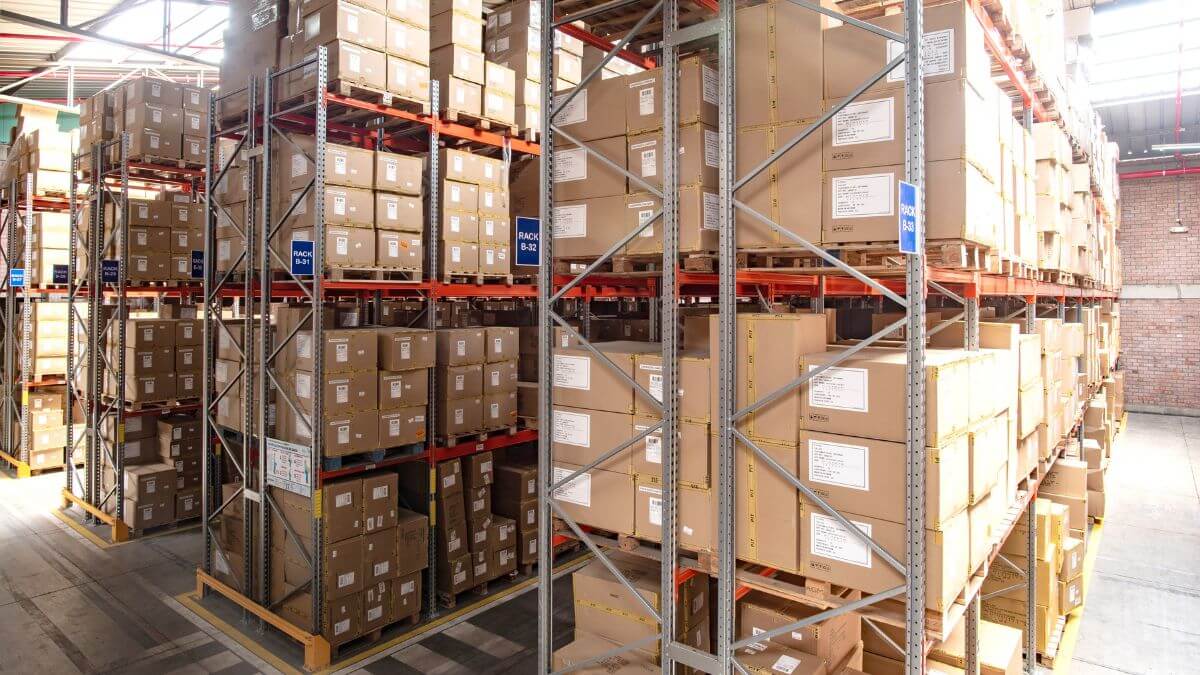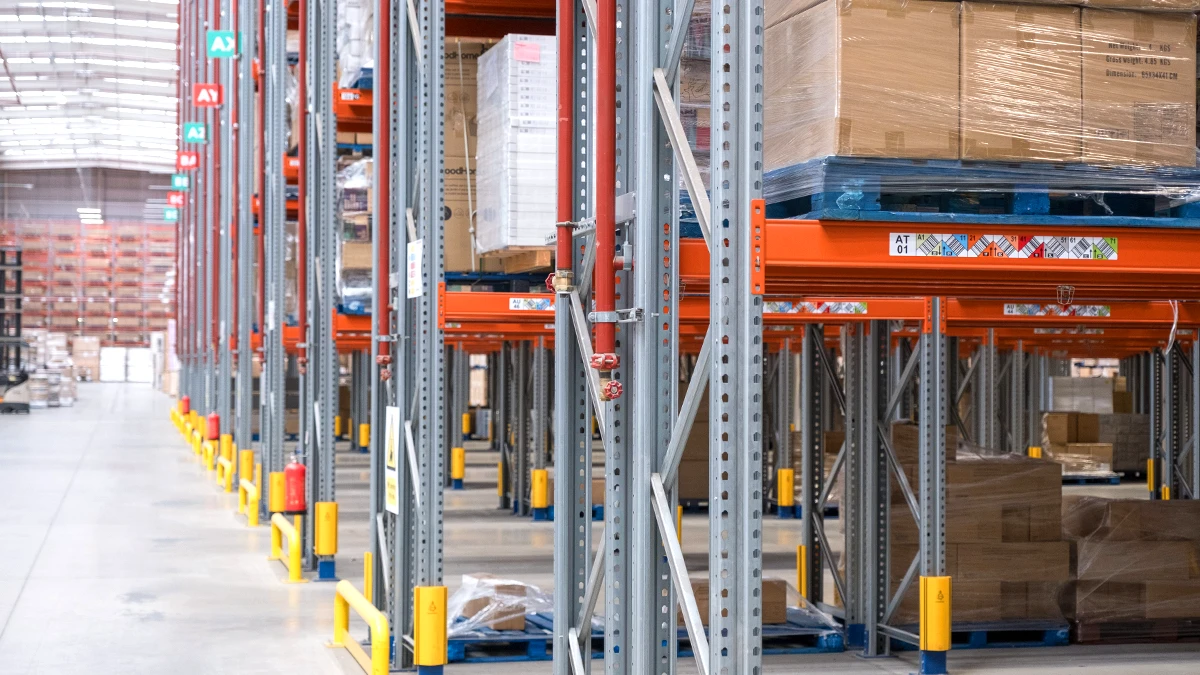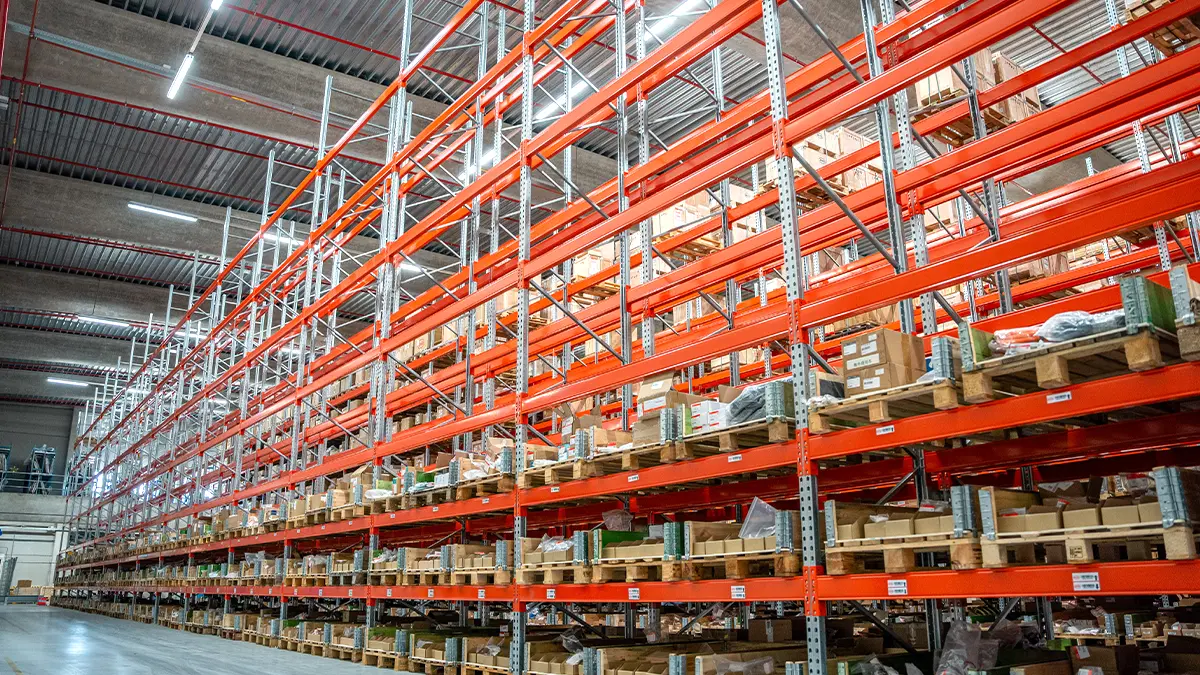Inventory shrinkage is a common problem in industrial storage that can significantly affect business balance sheets and efficiency. Fortunately, advanced warehouse management technologies offer effective methods to monitor and reduce shrinkage.
Definition of Shrinkage in the Warehouse
Inventory shrinkage refers to the loss of value of stored stock due to several factors. These losses can occur at any stage of the supply chain and represent the discrepancy between recorded inventory and actual inventory.
Common Causes of Shrinkage
Causes of shrinkage in a warehouse are varied and can significantly impact efficiency and operating costs. Some of the most common causes are explained below:
- Inventory management errors: Discrepancies in inventory records can arise from human error during manual posting. These can include data entry errors, incorrect product counts, or problems in the inventory management system, and can lead to discrepancies between theoretical and actual inventory, causing incorrect stock management and replenishment decisions.
- Product expiry: Especially relevant for perishable products, expiry can cause products to be unsuitable for sale and having to be removed from the inventory. FIFO or other similar systems must be used for these products.
- Receipt of defective goods: Failure to properly inspect goods upon receipt can result in the acceptance of damaged or incorrectly labelled items. Problems detected after receipt can lead to losses, returns and additional processes that affect operational efficiency.
- Theft: Losses due to both internal and external theft are a significant cause of shrinkage. Lack of adequate security measures can facilitate the theft of goods. Product loss due to theft not only affects inventory, but also confidence in warehouse security and can result in additional costs to improve security.
- Improper handling of materials: Improper use of storage and transportation equipment can damage products. Physical damage can render products unusable, increasing losses and reducing the availability of saleable inventory.
- Inefficient transportation: Problems during shipping, such as damage from mishandling or improper conditions, also contribute to shrinkage. Shipping damage may result in the need for product replacements or returns and lead to loss of customer confidence.

Types of Shrinkage
There are several types of shrinkage in the warehouse. Understanding them is crucial to managing them effectively. Types of shrinkage can be mainly classified into normal shrinkage and abnormal shrinkage:
- Normal shrinkage: Losses are considered inevitable and are part of the usual product operation and handling process in the warehouse. Some examples are: evaporation in the case of liquid or volatile products, wear and tear on products such as certain construction materials or textiles, and the handling of products which, for example, may cause liquids to spill.
- Abnormal shrinkage: Unexpected and often avoidable losses, usually resulting from errors, accidents or unexpected events. For example, losses caused by administrative errors when entering data, incorrect counts or failures in the inventory management system. Other examples of such unexpected events are theft, damage from accidents or the receipt of defective products.
Types of shrinkage can also be divided according to the origin or nature of the loss: physical shrinkage (physical damage, wear and tear or disappearance), accounting shrinkage (discrepancies between recorded inventory and actual inventory).
Impact of Shrinkage on the Company
The impact of shrinkage on a company can be significant and multifaceted, affecting not only financial results, but also operational efficiency, customer satisfaction and business reputation.
The most visible losses are financial losses. Shrinkage is a direct loss of unsellable products, which reduces the company's potential revenue. It also represents expenses incurred to replace lost inventory, including the purchase of new products and the cost of additional storage.
Due to the existence of shrinkage, we can also see an increase in operating costs to replenish lost inventory and improve the control measures, as well as an increase in insurance premiums to cover the risk of inventory loss.
Furthermore, efficiency will be reduced, since resources will be diverted to manage shrinkage instead of focusing on productive activities, which will lead to supply chain delays, affecting production and delivery.
Customer satisfaction will also be reduced. The lack of available products can also lead to delivery delays and, therefore, customer dissatisfaction. Logically, this will affect the company’s reputation.
Poor shrinkage management can also impact planning and strategy, which can make it difficult to meet set objectives, as well as impact sustainability due to product and material wastage.
Shrinkage Reduction Strategies
To avoid problems that generate the existence of the above-mentioned types of shrinkage, a series of strategies are available to us to reduce this obstacle. The main ones are as follows:
- Warehouse reconfiguration: Optimise warehouse design to facilitate access and reduce the risk of damage. The creation of specific storage areas for fast-moving items, perishable products and fragile goods can also be a solution to this problem. A good layout reduces handling time, minimises the risk of accidents and improves overall efficiency.
- Automation and advanced technologies: Implement warehouse management systems (WMS) that allow accurate, real-time tracking of inventory levels. Technologies such as RFID and barcodes can also be used for more effective inventory control. This will improve inventory accuracy, facilitate product tracking and optimise workflow.
- Staff training: Regularly train employees in best practices for handling and storing products, and in the use of the technologies implemented. This will reduce handling errors, improve operational efficiency and increase awareness of the importance of minimising waste.
- Regular inspections: Carry out periodic audits to identify and rectify inventory discrepancies. With this improvement, discrepancies can be detected and corrected in time, improving inventory accuracy.
- Security improvements: Implement robust security measures to prevent theft.

Measuring Shrinkage
Measuring shrinkage is essential to control and reduce its impact. The shrinkage percentage can be calculated by comparing the initial quantity of product with the final quantity after processing or storage.
The steps to measure shrinkage are as follows:
- Determine the initial inventory quantity: the quantity of products in inventory at the beginning of a given period.
- Determine the final inventory quantity: the quantity of products in inventory at the end of the selected period.
- Record sales and other uses: record the quantity of products sold during the period and include products used for samples, donations or internal consumption.
- Calculate the shrinkage: calculate the theoretical inventory, adding purchases to the initial inventory and subtracting sales and other uses. After this, the actual inventory is calculated, which consists of taking inventory and counting the actual quantity of products at the end of the period.
The formula commonly used to calculate the shrinkage is:
Shrinkage = (Theoretical Inventory - Actual Inventory / Theoretical Inventory) X 100
This indicator is crucial to identify problems in logistics processes and take corrective measures.
Solutions to Reduce Shrinkage
At AR Racking, we offer advanced storage solutions that help to optimise warehouse management and minimise the risk of shrinkage. Contact our team to find out more about how we can help you to optimise your operations with our industrial storage systems.




